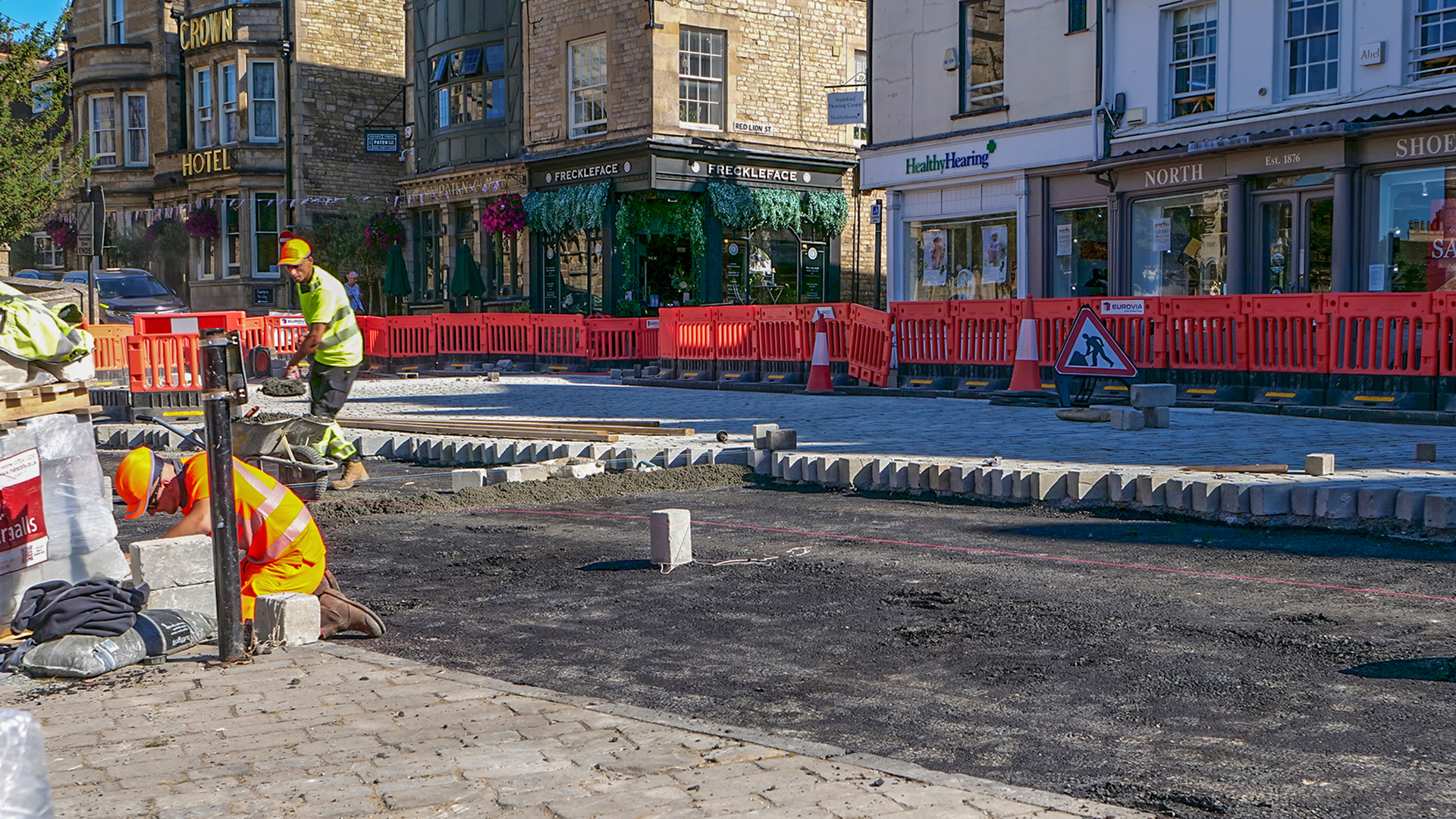
When damage occurs on the road or path of one of Lincoln’s heritage sites, or at a location of significant historical beauty, there’s two things to consider.
Is the area safe to use and how to make repairs that match in with the materials that have been in place for, sometimes, hundreds of years.
As the Highways Authority for Lincolnshire, we have a duty to make something safe. This has to happen first, and we do these repairs quickly.
That explains why you might see a patch of Tarmac that’s been laid in an area of cobbles or setts. We’ve put that down because without it there would be a big hole edged by stone blocks that would be unstable. We simply couldn’t leave such an area alone as it would be unsafe to walk or drive on without suffering an injury or causing more damage.
Our responsive crews are on site as quickly as possible once damage to a stone path or road is reported. They will remove the damaged material, make a clean edge on the hole and then fill it with Tarmac to that the area is level and can be used again almost immediately.
We always try to get a permanent repair in place straight away, and if we have the right materials to hand – or it’s the case that they are readily available – we will get on with making good.
However, if that’s not the case then the next step is to begin the often-laborious process of sourcing those right materials, in the right amounts, to match what was used sometimes hundreds of years ago.
One of the trickiest aspects to this is to get the materials cut to the right size. It’s not as simple as having the stone parts cut into standard lengths or widths by a machine at a quarry. Because the original stones were often cut by hand, the replacements will also need to be supplied in irregular sizes - and that happens in irregular amounts.
So, to match what was on the floor before, our experts decide on the type of material, the amount and all the other random elements that go into stone cutting for each part of the reinstatement.
Once the correct materials are sourced, the uniquely specific information given, the stone prepared and delivered and then the weather forecast is good enough, the laying experts can move in. They remove the Tarmac repair, clean the edges and get on with making the area look as good as it did before.
It’s not a quick job – parts of it take quite a while to get right – but when complete, and after a ‘weathering in’ period for the colours to age and match the original stone, only those with a very keen eye should be able to see where the damaged had occurred at all.
